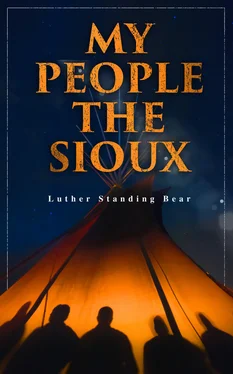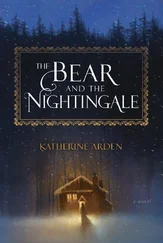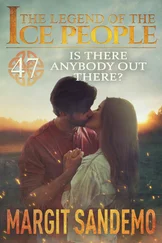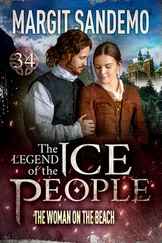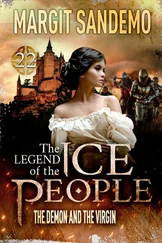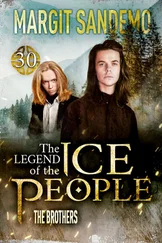The whole side of the buffalo was roasted. After all the meat had been cleaned from the bones, my father took six of the ribs and placed them together. He then split a piece of cherry wood and put the ends of the bones between the pieces of wood. The whole affair was then laced together with rawhide rope on both ends of the bones. On top of these bones, Father fastened a buffalo head, with rawhide ropes. Then he made a string of rawhide which was fastened to the front of the contrivance to pull it with. This was my rib sleigh or ‘can-wo-slo-han.’ After sliding down in the snow a few times, these bones would become smoother than most of the steel runners on the sleds of to-day. We could use them in winter on the snow, and in the summer for sliding down the grassy slopes. The ribs, or runners, never became rusty, and if we moved camp we did not have to pack our sleds along. Where there were more buffalo, there were plenty more ribs to make other sleds with.
One of the games we played was called ‘hu-ta-na-cu-te.’ There is no word or name in English for this game, but it was played somewhat on the order of the white man’s game of ‘hockey’ on the ice, only instead of hitting, we threw. Our game was made from the end of a buffalo rib. This bone was about six inches long. One end was shaved down to a round point, somewhat resembling the letter ‘U.’ The other end was squared off, and the marrow cleaned out. Two small round sticks were inserted at an angle, and a wedge put between them. Then two feathers were put on the ends of these two sticks, and we were all ready for our fun.
Sometimes the snow would be falling fast when we were getting ready to play this game. I was one of the lucky boys to own a knife of my own. This acted as a sort of magnet to draw the other boys to me. They would all sit around in our tipi waiting for a chance to use my knife to whittle at a bone. The boys were all good to me.
In our country it grew very cold. The snow would freeze very hard after it fell, making the surface as smooth as glass. After the snow had frozen hard, we would start to play the ‘hu-ta-na-cu-te’ game. We would take opposing sides, and each side tried in every way to get the advantage over the other. Sometimes the game would be played against a bank to see if the boys could go over the top.
The ‘hu-ta-na-cu-te’ would be held in the right hand, between the thumb and second finger. The first finger would be placed between the two feathers over the plug. Standing in a row, we boys would throw this on the ice or snow full force. If thrown right, and if it landed on the flat side of the point, it would go a long distance. Some of the more expert players could even make it go away up in the air.
Occasionally the feathers would not get placed just right on the ‘hu-ta-na-cu-te,’ and it would not fly straight. Then the feathers must be adjusted until it would. Some of us became very expert in this game, and could throw it a great distance. The one who could throw farthest was the winner. On clear days we played this game dressed in breech-cloth and moccasins only. In those days we did not have the white man’s shirt and stockings; but we did not feel the cold, as the game was very exciting and the exercise kept us warm.
We had another game called ‘pte-hes-te.’ This was made from the tip end of a buffalo horn. We would shine the horn nicely and cut off about three or four inches. A long stick was placed in the open end and wedged in all around to hold the stick as near the center as possible. Only one stick was used in this game. Feathers were split and wrapped on the stick with sinew, much the same as we made our arrows, only we used two bunches. When the feathers were dyed bright colors, they looked very pretty, and helped guide the instrument. The ‘pte-hes-te’ was held in the right hand by the stick, and swung back and forth over the shoulder and then thrown down along the icy ground. It would go fast and much farther than an arrow. We had to be very careful to have these made straight, as they were much heavier than the ‘hu-ta-na-cu-te,’ and if they hit you, they might kill.
We also had another game called ‘can-wa-ki-ya-pi,’ a sort of top game. It was made from the limb of a tree, tapered to a point. We had little whips made from a stick, with a strip of buckskin for a lash. We spun the top between the fingers and whipped it to keep it in motion. In all natural wood you will find a heart right in the center. My father drove a piece of bone that was very sharp into the heart of my top for a peg. When all the boys were playing ‘can-wa-ki-ya-pi,’ or top game, it was interesting to hear the tops spin and sing.
Perhaps you will wonder what the girls did. Among Indians, girls and boys play different games, and are always separated from each other. I think that is one reason why our girls grew up to be very nice young women.
The first girls’ game I shall mention was called ‘pa-slo-han-pi.’ This was made from the end of a buffalo or elk horn, much the same as the ‘pte-hes-ta,’ which the boys played.
The handle of the ‘pa-slo-han-pi’ was quite long, and there were no feathers attached. With the first finger of the right hand on the tip end of the stick, the girl threw the ‘pa-slo-han-pi’ from over the shoulder, much the same way a girl throws a stone, only it would glide when it struck the ice. The one who threw farthest was declared the winner. Some of the girls were very skillful at the game.
Another game was ‘i-ca-slo-he,’ a sort of game of marbles, but it was played in the winter on the ice. The girls would offer a prize for the winner. Probably you will wonder where we got our marbles. In this world of ours the One above, who has always provided for His children, helped us, in our amusements as well as in our daily work. On our reservation we found very nice round stones. If any of the boys found round stones, they would give them to their mother, to be presented to some girl.
The girls would first put some brush on the ice to be used as a seat. Then they would choose sides. The good players always tried to remain together, so they could win the prize. The girls sat opposite each other, choosing the distance before the game started. Each side had a small piece of wood in front of them, which they called ‘un-pa-pi.’ The first side to play took all the marbles on their side. Then the leader threw them all, one at a time. If she knocked the block of wood away from in front of the others, they threw over their prize. If the prize happened to be a string of beads, and it caught the block of wood, then they won it back. But the other side had to try to win it by hitting their block of wood. Sometimes a string of beads would go back and forth several times. When one side lost their prize, then they started with the marbles again. Occasionally the small boys, bent on mischief, would slide over the ice and catch the beads and run away with them, whereupon the girls would chase us to recover the beads.
The ‘ta-si-ha’ is a game played by the young ladies, although occasionally the young men tried their hand at it. This was for those who were in what the whites would call the ‘junior age,’ and it was played on winter evenings.
This game was made from the ankle bones of the deer. After the bones had all been cleaned, they were strung on a buckskin string, with the narrow end down. At the narrow end a tassel of little stones, tied together, was hung. After the Indians began to get beads they made this tassel from them. There were about eight of these bones used in the game, each of which fitted into the wide end of the other. At the other end of the buckskin string was fastened the long bone of an eagle’s wing. Nowadays they use a piece of steel wire.
If the young women were playing among themselves, they would choose sides; but if the young men were to take part, they would take the opposing side. They held the eagle wing-bone in the right hand and the tassel in the left. Then they would swing the string of bones out in front of them. If they succeeded in catching the first bone, they played again. If a miss was made, they passed the ‘ta-si-ha’ to the next one in line. If the player caught the bone ten times in succession, it counted for one win. After catching the first bone ten times, they would start on the second, third, fourth, etc., until they caught the entire ten. Then they would catch the tassel, which would be called one game.
Читать дальше
